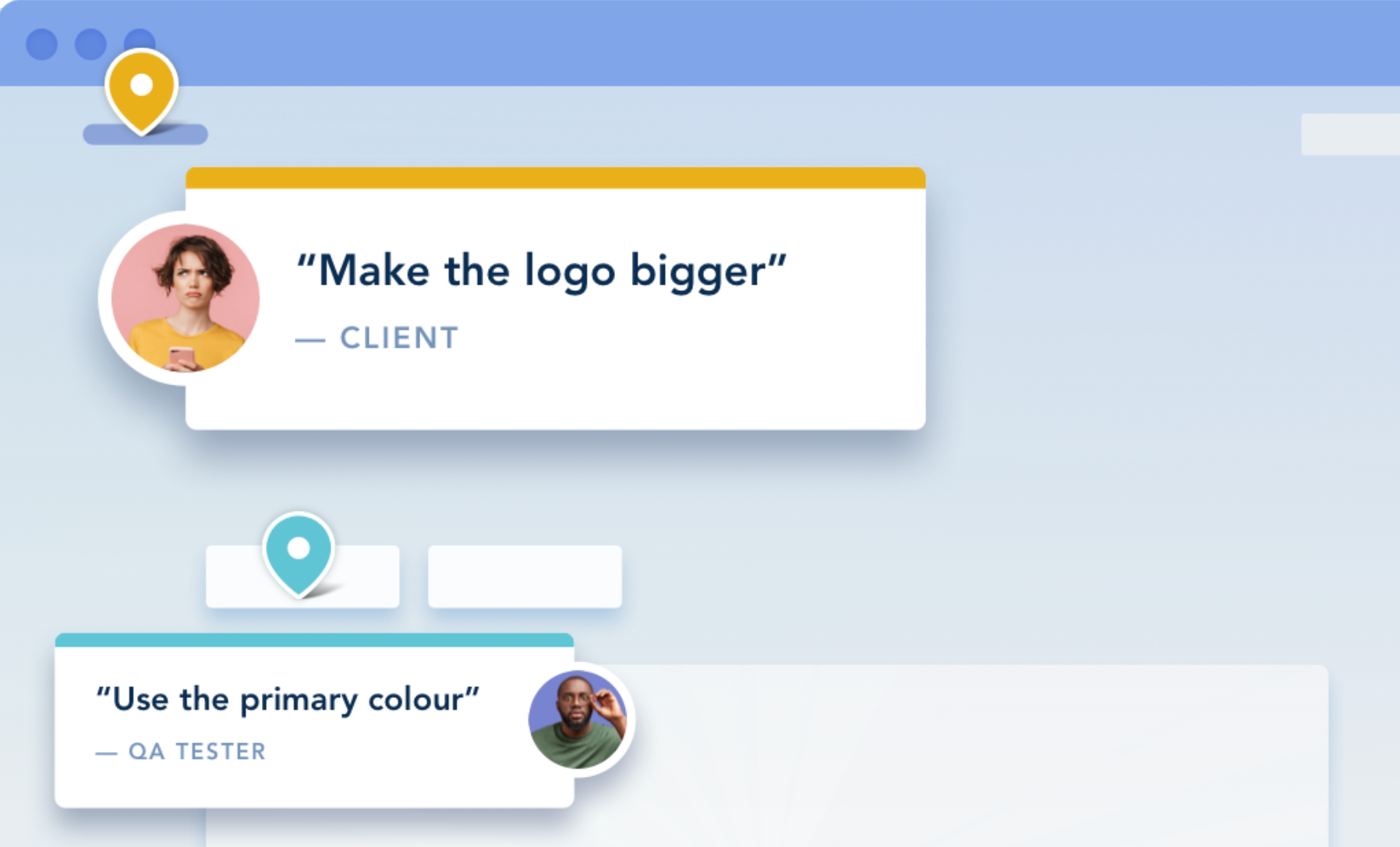BugHerd CEO and former agency owner, Stephen Neville caught up with Sai Sumar (Senior Marketing Strategist) & Sophia Spiridakis (Creative Project Manager) from leading NYC-based, independent full-service marketing and creative agency, Bartley & Dick, to talk about the strategies that have made the agency so successful in the website development space, and how they have managed to retain such a high percentage of their clients.
Here are the top highlights:
1. Start with a Clear Brief and understand clients needs
It's not just about understanding what the client wants; it's about discerning what they truly need to achieve their business goals.
At Bartley & Dick, the process starts by sending clients a detailed Google form. This form helps clients outline their needs, existing assets, budget, and timeline. This preliminary information is crucial as it gives the project team a head start in figuring out what the client needs, identifying any gaps and planning effectively. This will help develop a detailed and well-understood brief - foundation of any successful project.
2. Define Success Early
Set clear, measurable goals from the outset. Ensure that both your team and the client agree on what success looks like. Whether it's driving traffic, generating leads, or enhancing user experience, having a mutual understanding of objectives is crucial.
3. Use Robust Onboarding Processes
This includes walking clients through the contract, setting up timelines, and introducing them to your project management process. Using tools like ClickUp for internal tracking and Google Sheets for client-facing updates can help keep everyone on the same page.
4. Regular Check-Ins
Regular check-ins via weekly or bi-weekly meetings help keep everyone aligned and address any issues promptly. These meetings are an opportunity to review progress, discuss any changes or roadblocks, and ensure that the project is on track. They also provide a platform for clients to voice any concerns or provide additional input.
These check-ins also help avoid extra time spent scheduling calls and aligning calendars - it's easier to cancel a meeting if it's not needed and find time across teams to schedule a new one.
5. Transparent Scope Management
Changes are inevitable in any project but scope creep can quickly derail projects.
One effective strategy is to manage additional work that arises is to use a ‘bucket of hours’ approach. By pre-allocating a set number of hours for additional work, you can manage client expectations and keep the project within budget.
If the amount of additional work goes beyond the allocated bucket of hours, then it’s important to be transparent with clients about the impact on timelines and costs.
6. Use Client-Friendly Tools
Use tools that clients are comfortable with. Tools that require clients to have technical knowledge and which are cumbersome to get started with should be avoided. Simple tools minimize the learning curve for clients and keep processes streamlined. Just as important are the tools that are used internally to keep the projects on track.
Bartley and Dick uses a combination of tools to run their projects.
- Google Sheets is preferred by Bartley & Dick over more complex project management software for client updates as it’s a familiar tool. It’s very customizable and can be configured based on each client and each project; outlining timelines, deliverables, and key milestones.
- BugHerd is used by Bartley & Dick to collect and manage website feedback from clients. Clients are invited into the platform (no login setup required) and are able to pin feedback right on the web page as they review it. It’s very easy for them to use and enables the team to manage and track every piece of feedback efficiently.
- ClickUp is the team’s project management tool. Bartley & Dick conduct production calls every morning where they run through the priorities for the day and look ahead to the rest of the week. They use ClickUp for task management, time tracking, collaborating internally.
- Everhour is integrated with ClickUp in order to track time, create reports, and manage budgets directly within ClickUp. This enables the team to get detailed insights on how time is spent on tasks, helping to keep projects on track and within budget.
7. Adapt to Client Needs
Every client and project is unique. Whether it’s adjusting the process to fit the client’s workflow or being flexible with project phases, adaptability is key. For instance, some clients might need to see wireframes early to visualize the project, while others might prefer a content-first approach.
Bartley & Dick have a process set up for every type of project which they tone down or make more detailed depending on the preference of the client.
8. Consistent Engagement
Maintaining long-term client relationships requires ongoing engagement. Follow clients on LinkedIn, engage with their content, and show genuine interest in their success. Regularly check in on inactive accounts to keep relationships warm.
9. Have Fun
Work should be enjoyable for both your team and the client. A positive, friendly working environment can make your meetings the highlight of the client's week. People like working with those they enjoy being around.
Running successful website development projects is a blend of clear communication, meticulous planning, using the right tools, and fostering strong client relationships.
Every project will teach you something new, and you should always strive to make things even better.
By establishing a solid foundation, managing expectations effectively, and maintaining flexibility, agencies can deliver outstanding results and keep clients coming back for more.
Contact Us
We encourage you to watch the webinar recording and feel free to reach out to us for more insights and detailed strategies discussed during the session.
Sai Sumar - Senior Marketing Strategist, Bartley & Dick
sai@bartleyndick.com
Sophia Spiridakis - Creative Project Manager, Bartley & Dick
sophia@bartleyndick.com
Stephen Neville - CEO, BugHerd
stephen@bugherd.com

















But don't just take our word for it.
BugHerd is loved by 10,000+ companies,
350,000+ users across 172 countries.
4.8/5
4.7/5
4.5/5
5/5
8.7/10
Sam Duncan 📱📏 🌱
@SamWPaquet
"@bugherd where have you been all my life??
We just migrated our bug tracking over from Asana and have at least halved our software testing time🪳👏📈. "
Ashley Groenveld
Project Manager
“I use BugHerd all day every day. It has sped up our implementation tenfold.”
Sasha Shevelev
Webcoda Co-founder
"Before Bugherd, clients would try to send screenshots with scribbles we couldn't decipher or dozens of emails with issues we were often unable to recreate."
Mark B
Developer
“A no-brainer purchase for any agency or development team.”
Kate L
Director of Operations
"Vital tool for our digital marketing agency.”
Paul Tegall
Delivery Manager
"Loving BugHerd! It's making collecting feedback from non-tech users so much easier."
Daniel Billingham
Senior Product Designer
“The ideal feedback and collaboration tool that supports the needs of clients, designers, project managers, and developers.”
Chris S
CEO & Creative Director
“Our clients LOVE it”
Emily VonSydow
Web Development Director
“BugHerd probably saves us
at least 3-4hrs per week.”